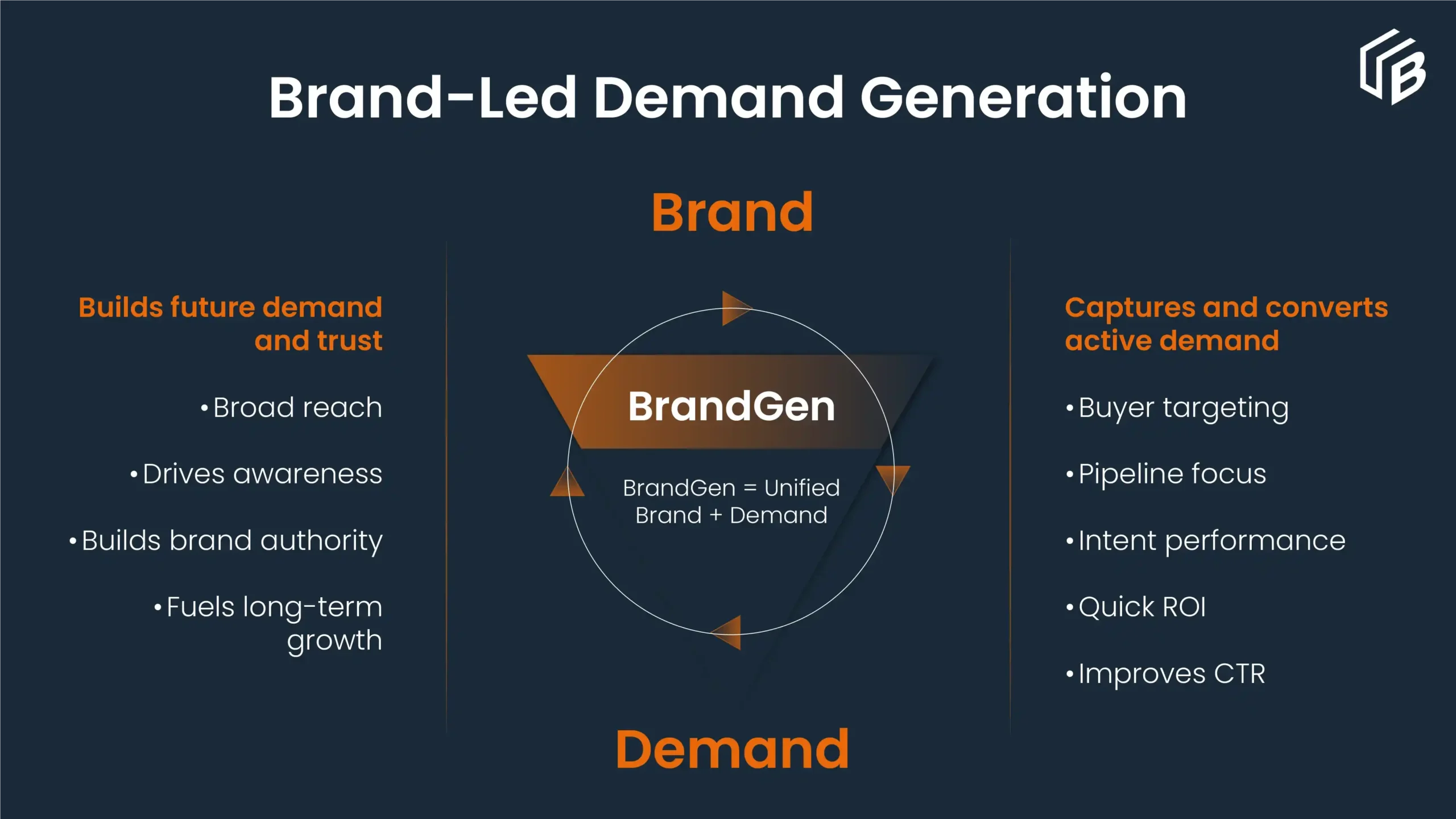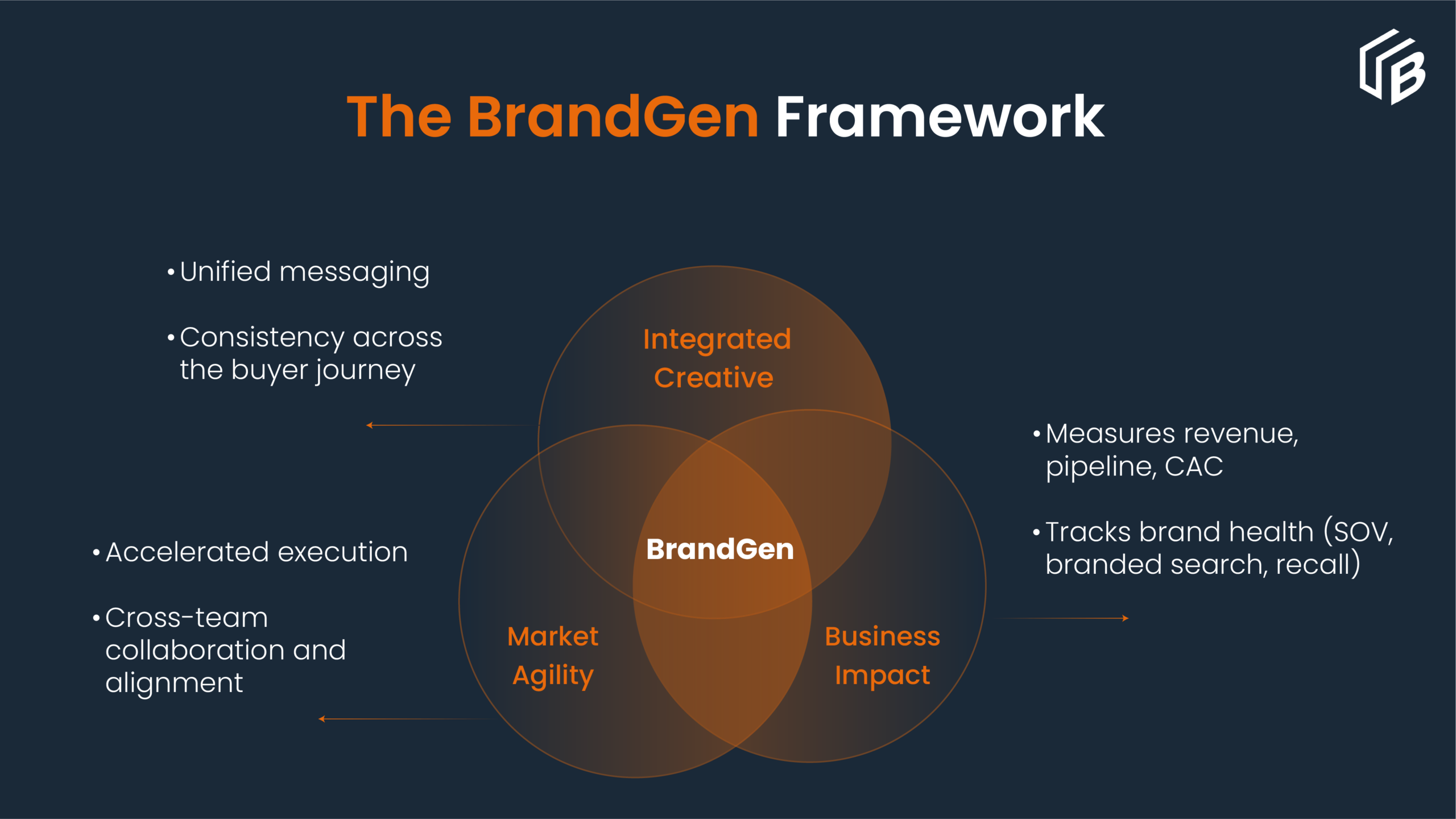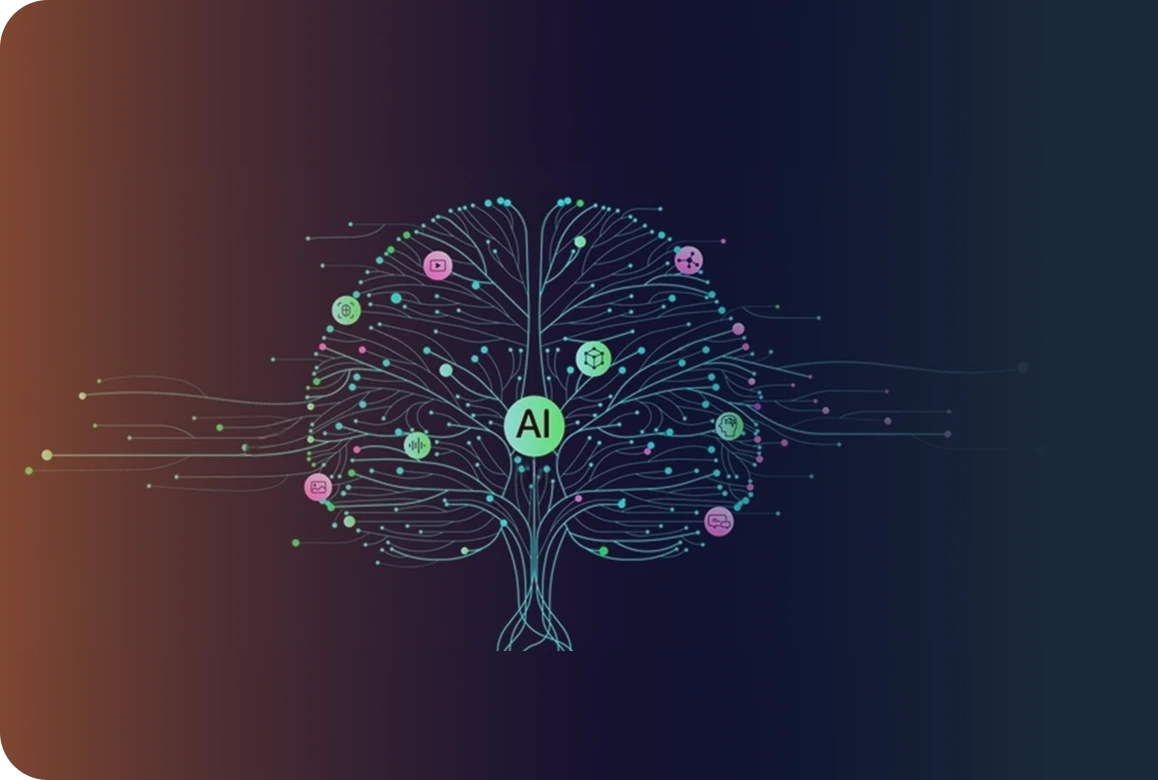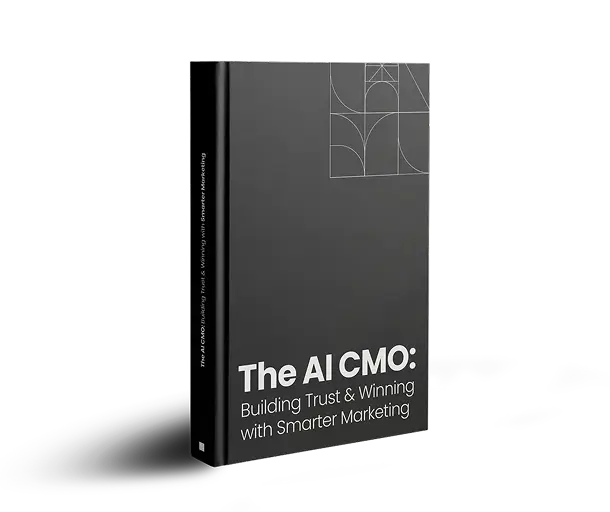Introduction
We’ve all been there. Should you shift your marketing budget to brand building or to demand generation strategies? Your brand and demand teams each have strong, well-supported opinions, of course.
So do I: Do both. But make it brand-led demand generation.
Brand vs. Demand
Today’s B2B buyers often follow non-linear paths, conducting much of their research anonymously before engaging with sales. They expect relevance, trust, and value from their earliest interactions. This is the issue with traditional B2B marketing’s siloed brand and demand functions. They either focus on top level impressions and reach that are hard to connect to bottom-line performance. Or they focus too much on short-term metrics like MQLs and struggle to keep pace with modern buyer behavior.
As a result, marketers struggle to connect brand awareness metrics like reach and engagement to bottom-funnel revenue impact.
The BrandGen framework helps to fix this operational problem. It unifies brand building and demand generation into a full-funnel strategy, building awareness among buyers who are not actively in-market and positioning the brand as an authority for when they are ready to buy. This blended approach accelerates pipeline by meeting buyers across trusted channels with content that educates and engages, ultimately driving higher conversion rates and sustainable growth.
The timeworn balancing act between brand building and demand creation is now a false dichotomy. The future of B2B growth is not in debating brand vs. demand, but in integrating brand and demand gen. At UnboundB2B, we call it BrandGen, brand-led demand generation.
Of course, it’s easy to say you need both demand and long-term growth – that’s pretty obvious. But the challenge is in finding efficiency, strength, and results. Combined into a single initiative, brand and demand are far more effective than each functioning on its own. BrandGen is multiplication, not simple addition.
BrandGen is a unified revenue generating engine that combines the best brand-building and demand generation strategies to integrate every aspect of your go-to-market plan. It’s managing your full-funnel marketing.
But details matter so let’s take a closer look.
The Old Marketing Playbooks Are Broken
Specialists tend to have precise and deep expertise, so they seem like the natural choice for your efforts. Bring in content experts to build content, digital specialists to run digital programs, and brand strategists to shape your brand, each role focused where it matters most.
But something’s missing. The thing is, it’s only your prospect that sees the combined marketing effect of your specialist silos. Can prospects piece together a single, compelling view of your brand and products? Let’s hope so. But let’s not place that burden on them. It’s our job as B2B marketers.
What Needs Fixing in Today’s B2B Marketing?
For starters, do your teams have differing or even conflicting KPIs and objectives? That breeds poor alignment. When
Forrester looked into this, they found that only 22% of B2B companies fully integrated brand and demand marketing. That’s so many lost opportunities.
Are you and your teams under pressure to build short-term pipeline while long-term brand building is deemed “good enough”? Quarterly results are vital, of course. But so is investment in future quarters’ results – that is, brand building. Successful companies need both.
Have you transitioned to
account-based marketing (ABM)? Good. But that’s not enough. The inherent danger of ABM is that it focuses on a limited set of in-market accounts. Shooting fish in a barrel seems successful, unless the nearby lake is full of fish you never see. Generally, 95% of your future buyers are not currently looking. ABM doesn’t reach them and leaves invaluable future demand on the table.
How about growth hacking or growth marketing? Is resource-light and cost-effective digital marketing the solution with its hyperfocus? No. It relies too heavily on lead capture and yields diminishing returns and poor brand equity. Over time, it’s a race to the bottom.
Or are your teams overcome by the burgeoning complexity within go-to-market and business functions? Today’s onslaught of tools, campaigns, data, systems, resources, and programs often inhibits an organization’s nimbleness. Marketing slows and its impact is diluted, making it even more difficult to understand clearly what’s working and what isn’t.
All in all, your marketing simply needs to efficiently drive leads and brand equity. That’s now possible with BrandGen.
BrandGen: Capture Markets, Not Just Leads
BrandGen is brand-led demand generation. Your B2B marketing funnel is a continuum, not separate parts. Reach your buyers across the entire purchase funnel and
buying journey with a unified front. Build out demand generation at the bottom of the funnel but also create brand awareness and preference at the top and middle of the funnel.
Today, sustainable growth comes from building market leadership. BrandGen expands your total addressable market (TAM) to improve immediate and future growth. It’s not a campaign, but a comprehensive full-funnel marketing framework that aligns brand, demand, and pipeline into one unified strategy.
The framework creates a coherent, consistent experience for your buying groups by aligning messages and touchpoints across different stages of the buying journey. It helps your marketing teams capture demand with calls to action that stem from your brand position, value propositions, messaging, and campaign assets to turn prospects into customers.
The Three Pillars of the BrandGen Framework
It’s a devastatingly simple framework. Just three pillars, but a fresh approach using time-tested and newly emerging capabilities.
1. Build Integrated Creative Platforms and Stories
BrandGen emphasizes the need to move beyond one-off campaigns and build integrated creative platforms and unified brand stories that resonate throughout the customer journey. BrandGen unifies brand-building and
demand generation efforts into a single, cohesive strategy to create a consistent brand presence and message, regardless of where a buyer is on their journey. This framework ensures that messaging narratives are mapped against funnel stages for consistency and flow as buyers progress from awareness to consideration and purchase. A strong creative platform acts as the “golden thread” that tells this unified brand story across all touchpoints and funnel stages.
2. Measure Impact on Business Outcomes
A key aspect of BrandGen is a shift in how success is measured. Instead of solely focusing on traditional marketing metrics like impressions, engagement, or MQLs, the BrandGen focus moves to demonstrating the impact of brand efforts on top-line and bottom-line growth. Brand investment is framed not just as a cost, but as a revenue multiplier. Show how brand and demand efforts contribute to total revenue growth, pipeline contribution, and a reduction in
customer acquisition cost (CAC). Brand performance metrics like share of voice (SOV), branded search volume, and brand recall/trust are also considered to track upper-funnel impact and link brand building to pipeline creation and deal velocity.
3. Achieve Speed and Agility in Market Building
While building brand reputation inherently takes time, the BrandGen approach aims for speed and agility in execution. BrandGen’s unified approach across teams and processes requires forming “new muscle memory” within an organization. BrandGen is nimble and offers an accelerator that can help get the marketing team into market so much faster than a typical agency model.
AI-powered tools are integrated into the BrandGen process to enhance speed and efficiency in areas like audience segmentation, personalization, content creation, and ongoing optimization. The framework is a structured yet accelerated path to build lasting market leadership.
How to Implement BrandGen
What specific actions do you need to take?
- Emphasize and re-emphasize the need for internal alignment across your teams. Do they have the right objectives? Do you have the right roles in the right teams?
- Develop integrated messaging and campaigns to tell a unified story that combines rational and emotional messages. Connect brand and demand campaigns.
- Align media budgets, media plans and stakeholders. If you can, have a single media budget for both brand and demand.
- Create a fundamental, extensible idea to guide creative executions across your funnel to build consistent and mutually helpful touchpoints.
Measure BrandGen to Manage BrandGen
The metrics you use to evaluate your BrandGen campaign may be a little different from what you’re used to. Pay less attention to traditional brand metrics such as impressions and engagement. Instead, show the brand’s effect on metrics that your stakeholders care about, such as demand conversion and pipeline contribution.
Consider a dashboard to visualize and track your business outcomes, pipeline contribution, brand performance and demand performance. If you can populate your dashboard to show total revenue, pipeline contribution, share of voice, branded search volume, MQL-to-SQL conversion, and paid media ROI.
The Time for Brand-Led Demand Gen Growth Is Now
Business-to-business growth now requires fresh thinking. With most marketers already relying on optimized but legacy tools and strategies, there is little competitive edge remaining. B2B brand and demand efforts have been isolated from each other for too long due to specialized and unaligned strategies.
BrandGen aims to join the silos under a wide view of market expansion and prospect conversion. It aims to streamline the work of internal teams, outside agencies, and budgets into a simplified and powerful GTM model. Today, new technologies and holistic thinking hold the promise of sustainable differentiation and market leadership with BrandGen.
Let’s talk about how BrandGen can position your brand as a market leader.












